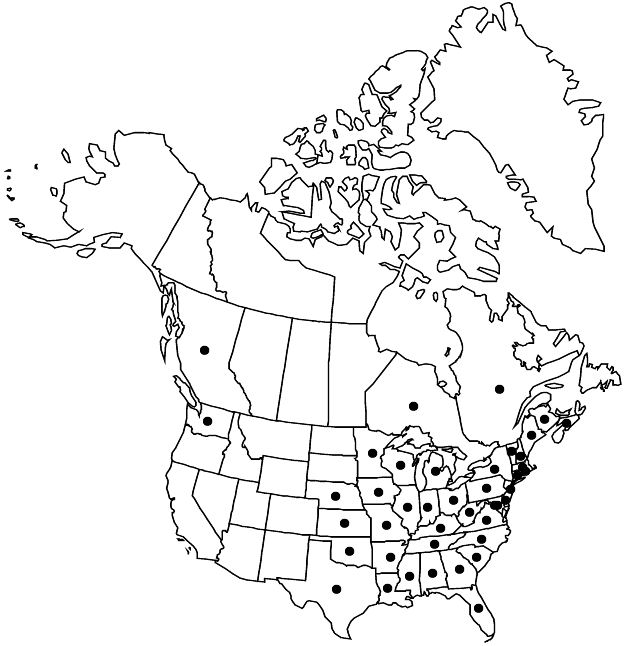Prunus serotina var. serotina
Twigs usually glabrous, sometimes hairy, hairs rusty brown. Leaves: petiole (7–) 10–23 (–30) mm, glabrous, glandular distally, glands 1–6; blade usually narrowly elliptic to elliptic or lanceolate, rarely obovate, 4–13.5 × 1.7–5.8 cm, membranous or slightly leathery, apex acute to acuminate, sometimes abruptly so, abaxial surface glabrous or midribs sparsely to densely hairy proximally. Inflorescences: rachises 35–140 mm. 2n = 32.
Phenology: Flowering Mar–Jun; fruiting Jun–Sep.
Habitat: Roadsides, edges of fields, secondary forests, open woodlands, ravines, along streams
Elevation: 0–1800 m
Distribution

B.C., N.B., N.S., Ont., Que., Ala., Ark., Conn., Del., D.C., Fla., Ga., Ill., Ind., Iowa, Kans., Ky., La., Maine, Md., Mass., Mich., Minn., Miss., Mo., Nebr., N.H., N.J., N.Y., N.C., Ohio, Okla., Pa., R.I., S.C., Tenn., Tex., Vt., Va., Wash., W.Va., Wis., Mexico (Chiapas), Mexico (Chihuahua), Mexico (Coahuila), Mexico (Colima [Socorro Island]), Mexico (Durango), Mexico (Hidalgo), Mexico (Jalisco), Mexico (Michoacán), Mexico (Nayarit), Mexico (Nuevo León), Mexico (Oaxaca), Mexico (Puebla), Mexico (San Luis Potosí), Mexico (Tamaulipas), Mexico (Veracruz), Central America (Guatemala)
Discussion
Plants of Prunus serotina from the Edwards Plateau in central Texas have often been recognized as subsp. or var. eximia. If it were not for their geographic isolation from the rest of var. serotina by 200 km, it is doubtful that taxonomists would even think about segregating these outliers from the plants of eastern North America. All of the suggested distinctive characteristics of var. eximia (glabrous leaves, branchlets, and inflorescences; coarsely toothed leaf margins; long petioles) can be found both separately and combined in specimens from other areas within the main range of var. serotina. The trees of the Edwards Plateau seem to be merely a homogeneous subset of the wide-ranging, heterogeneous var. serotina.
Selected References
None.